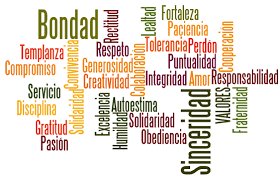During the Athi Rudra Maha Yagna held at Puttaparthi in 2006, Sathya Sai Baba said, “The Vedas establish the goal and purpose of human life. Everything concerning creation, sustenance, and dissolution of the universe are contained in the Vedas. Rudram is generally understood as a synonym to Lord Easwara. In fact, it is the essence of all the Vedas. The Namaka emphasises the aspect of detachment whereas Chamaka, stresses the aspect of desire. But the essence of both aspects is one, what is to be discarded and what is to be desired? Evil is to be discarded and good is to be desired. Both are essential. The Athi Rudra Maha Yagna protects and fosters the divine nature in human beings, while rejecting and diminishing the demonic qualities. Thus, it works for the welfare of humanity. This Yagna is conducted to realise the Atma Tattwa. If you continue to perform this Yagna, soon the people of the entire world will become united.”
The Athi Rudra Maha Yagna will be performed at Muddenahalli from October 13 to October 23, 2015. Along with the Yagna, prayers will also be offered to the ‘Lingam’, which Baba says is “the symbolic form of Godhead, the simplest sign of Emergence and Mergence.” A milk-white Amrutha Shila Lingam from Jaipur, Rajasthan will be installed in the mantap. There will be 11 Homa kundas (fire altars) in the Yagnashala (place of performing Yagna and 140 Vedic priests from various parts of Southern India will come together at Muddenahalli to participate in the Yagna. An idol of Lord Shiva in meditation at Mount Kailash will be installed at one end of the mantap for devotees to behold his familiar form. The Yagna and poojas are being performed for Loka Kshema and Loka Kalyana, for Universal Peace and Well-Being.
‘Yagna’ means sacrifice, ‘Athi’ and ‘Maha’ mean great. Athi Rudra Maha Yagna is the highest form of worship of Rudra, Lord Shiva. During the period of 11 days, Sri Rudram will be chanted 14,641 times. Eleven recitations of the Namakam, followed by one recitation of the Chamakam is called Ekadasha Rudram. Eleven Ekadasha Rudram make a Laghu Rudram; eleven Laghu Rudrams make a Maha Rudram and eleven Maha Rudrams constitute Athi Maha Rudram.
From the first to the eleventh day (October 13 to October 23), each morning there will be Aruna Parayanam and Mahanyasa Parayanam followed by Panchamrita Abhishekam of the sacred Lingam. Then, Sri Rudra Parayanam (chanting of the Sri Rudram) along with Sri Rudra Abhishekam of the sacred Lingam will take place. Thereafter, the priests seated around 11 Homa kundas will perform the Sri Rudra Homa, offering oblations into the Homa kundas, as they chant the Rudra mantras. This will be followed by Sri Sai Gayathri Homa and Ashtavadhana seva. Every afternoon the Ritviks will recite the Krama and Ghana patha. This will be followed by discourses on the Srimad Bhagavatham and talks by eminent scholars. Devotees will then be blessed with Baba’s Divine Discourse. Bhajans and Maha Mangala Arathi will follow.
On the last day of the Athi Rudra Maha Yagna (Friday, October 23), after the Sri Rudra Homa, Jayadi Homa which is done as part of the concluding ceremonies will be performed before the grand finale, the Maha Poornahuthi. Sanctified water from the kalashas in the Yagnasthala will be poured onto the Divine Lingam during Kumbhabhishekam. The Athi Rudra Maha Yagna will conclude with Baba’s Divine Discourse.







































No hay comentarios :
Publicar un comentario